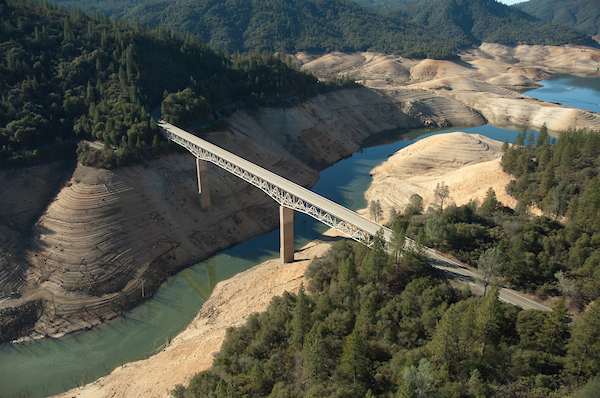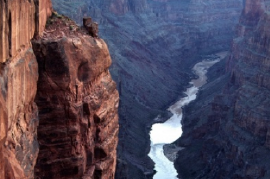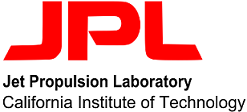About
The 2019 Climate Summit was another great success. As we receive presentations and learning sequences, we will be promptly posting them here. Please check back often.
A suite of K-12 Learning Sequences were developed by California science educators in collaboration with practicing climate scientists. These learning sequences were piloted in classrooms by the teachers that developed them. In addition, they underwent peer review and the NGSS Lesson Screener was utilized to revise and update the learning sequences. All learning sequences were written to support high-quality, phenomena-based, three-dimensional science teaching and learning. The learning sequences were presented as short courses at the 2018 California Science Education Conference.
The resources were developed with support from the S.D. Bechtel, Jr. Foundation, California Environmental Literacy Initiative, California Science Project, Ten Strands, Scripps Institution of Oceanography, National Science Foundation, and K-12 Alliance @ WestEd's California NGSS K-8 Early Implementation Initiative.

Image source: Paul Hames/California Department of Water Resources via Pixel
Learning Sequence SummaryKindergarten Earth Science Unit
California Drought
Kindergarten students will go through six 5E lesson sequences over the course of 6-8 weeks learning about weather patterns, climate, and their effects on living things. Students will make observations about their local weather outside, with weather calendars, and make a rain gauge. Lessons use dry lake before and after photos and the narrative text Bringing Rain to the Kapiti Plain, to make connections about drought. Students will end the unit with a human impact component to discover and share ways that people can make a difference to save water during periods of drought or anytime.
×Kindergarten
California Drought
By: Keegen Gillette, Kindergarten Teacher, Aspire Public Schools and Jenny Hofmeister, Environmental Scientist, California Department of Fish and Wildlife
Anchor Phenomenon: “I want to go swimming, but the lake is dry!” (Drought in California)

Image Source: Debra Jenkins
Learning Sequence SummaryFirst Grade Life Science Learning Sequence
Different Plants Look Different
This lesson sequence bridges the kindergarten standards dealing with what living things need to survive with the 2nd grade standards covering the changes in the earth. Students begin by recognizing there are different climates. They observe their own playground to discover that extreme temperatures and drought stress living things and those living things have characteristics that can help them survive adverse conditions. The lesson sequence allows students to take a close look at the characteristics that help a succulent survive without water or soil for a long period of time.
×First-Grade
Different Plants Look Different
By: Debra Jenkins, 1st-Grade Teacher, Lakeside USD and Jenny Hofmeister, Environmental Scientist, California Department of Fish and Wildlife
Anchor Phenomenon: Our mystery plant survives four weeks with no soil and no water! (AKA - Zombie Plant)

Image source: Paul Hames/California Department of Water Resources via Pixel
Learning Sequence Summary2nd Grade Earth Science Unit
The Earth Is Constantly Changing
Second grade students will go through a seven 5E lesson sequence over the course of 6-8 weeks learning about how wind and rain shape the landscape, and how the climate can affect the landscape. Students will end the unit with a human impact component to discover and share ways that people can make a difference during periods or drought or anytime.
×Second-Grade
The Earth Is Constantly Changing
By: Katherine Altmann, 2nd-Grade Teacher, San Diego USD and Jenny Hofmeister, Environmental Scientist, California Department of Fish and Wildlife
Anchor Phenomenon: “I want to go swimming, but the lake is dry!” (Drought in California)

3rd-Grade Earth Science Learning Sequence
Weather Extremes and California Wildfires
In this learning sequence students use the local weather data and schoolyard site map data as a foundation for thinking about the connections between weather patterns and wildfire data. Students look at their local community and the state of California to look for patterns on a greater scale. The unit culminates with students looking at human engineering designs for weather-related hazards to determine their merit.
×Third-Grade
Weather Extremes and California Wildfires
By: Rachael Tarshes, Katherine Altmann, Carolyn Hernandez, Teachers, San Diego USD and Darcy Taniguchi, Biology Professor, CSU San Marcos
Anchor Phenomenon: Wildfires in California are different throughout the year.

Image Source: PublicDomainPictures.net
Learning Sequence Summary4th-Grade Science Learning Sequence
Weather Extremes and California Wildfires
Learnings include:
- Rivers can change the land through weathering and erosion
- Rock patterns reveal changes over time
- People can impact natural processes
Fourth-Grade
Dangerous Earth
By: Alyssa Nemeckova, 4th Grade Teacher, Palm Springs USD and Darcy Taniguchi, Biology Professor, CSU San Marcos
Anchor Phenomenon: The Grand Canyon is big and has unusual patterns

5th-Grade Science Learning Sequence
Dangerous Earth: California Wildfires
Learnings include:
- Fire danger is higher when air is warm, plants are drier
- Fires demonstrate a transfer of energy and matter between spheres
- More people in CA live in urban-wildland interfaces
- Most wildfires in CA are started by people, people can prevent this
Fifth-Grade
Dangerous Earth: California WildFire
By: Kate Gallagher, 5th Grade Teacher, Oakland USD and Darcy Taniguchi, Biology Professor, CSU San Marcos
Anchor Phenomenon: California Wildfires

Image Source: Wikimedia Commons
Learning Sequence Summary6th-Grade Science Learning Sequence
Ice, Ice Baby...Climate Change
Learnings include:
- Absorption and reflection of solar radiation Ice albedo feedback
- Human impacts on the environment (anthropogenic forcing)
Sixth-Grade
Ice, Ice Baby...Climate Change
By: Leah Wheeler, Teacher, Galt USD; Ian Eisenman, Associate Professor, UC San Diego; Till Wagner, Assistant Professor, University of North Carolina, Wilmington
Anchor Phenomenon: What has caused Arctic sea ice to melt over the past 40 years?

Image Source: Wikimedia Commons
Learning Sequence Summary7th-Grade Science Learning Sequence
Hot and Out of Breath
Learnings include:
- Humans depend on marine food sources that, in turn, depend on livable space, oxygen, and energy resources
- Changes in temperature and oxygen levels impact marine ecosystems and disrupt the cycling of matter and flow of energy
Seventh-Grade
Hot and Out of Breath
By: Olivia Allison, Teacher, San Diego USD and Yassir Eddebbar, Postdoctoral Scholar, Scripps Institution of Oceanography
Anchor Phenomenon: Oxygen Minimum Zones are a naturally occurring phenomenon where there is little to no oxygen in a subsurface layer of the ocean. The ocean’s Oxygen Minimum Zones are expanding.

Photo by Forest Service, USDA. Photo via: Good Free Photos
Learning Sequence Summary8th-Grade Science Learning Sequence
Ice Loving Seals are Losing Habitat
Learnings include:
- Increases in the human population and consumption of natural resources is causing increases in atmospheric and oceanic warming beyond the normal trend
- Accelerated temperatures are rapidly declining sea ice
- Some populations are unable to adapt to rapid changes
Eighth-Grade
Ice loving Seals are Losing Habitat
By: Stephanie Sanchez, Teacher, Vista USD and Alex Hangsterfer, Geological Collections Manager, Scripps Institution of Oceanography
Anchor Phenomenon: How do scientists use data to understand climate change, make predictions for the future and solve local problems?

Image Source: Pixabay
Learning Sequence SummaryHigh School - Chemistry in the Earth System Learning Sequence
Life in the Balance: Coastal Carbonate Chemistry
This NGSS aligned unit is designed for implementation in a High School Earth Space Science embedded Chemistry course. During this unit students will be presented with an overarching phenomenon about the decrease in oyster population. Students will then work through 5 different lessons where they will use investigative phenomenon to learn about the carbon cycle, acids, equilibrium, le chatelier’s principle, and ocean acidification. Each of these 3-Dimensional lessons utilizes Crosscutting concepts (CCC), Science and engineering practices (SEP), and Disciplinary Core Ideas (DCI). Additionally, explicit connections to the Environmental Principles and Concepts (EP&C) are highlighted throughout the unit. The unit will culminate with students using their knowledge to explain the anchoring phenomenon and design solutions for the real-world problem.
×High School - Chemistry in the Earth System
Life in the Balance: Coastal Carbonate Chemistry
By: Rachel Meisner, Chemistry Teacher at Sweetwater UHSD; Tera Black, High School Science TOSA, Torrance, USD; Phil Bresnahan, Chemical Oceanography Researcher, Scripps Institution of Oceanography
Anchor Phenomenon: The oyster population is decreasing in Pacific Coast shellfisheries and scientists are worried

Image Source: thatslifesci.com
Learning Sequence SummaryHigh School - Living Earth Learning Sequence
Hot, Sour, and Drowning
This learning sequence is divided into four components or learning sequences that focus on where carbon is stored and how it moves through different reservoirs, how reef’s are systems of interacting components, how ecosystems change with natural fluctuations in climate, and that human influence can affect systems at different scales.
×High School - Living Earth
Hot, Sour, and Drowning
By: Wendy Hagan, Biology and Environmental Science Teacher, Granada Hills Charter and Tyler Cyronak, Postdoctoral Researcher, Scripps Institution of Oceanography
Anchor Phenomenon: Coral reef ecosystems have significantly changed over the last few decades due to climate change and anthropogenic impacts OR Coral reefs are declining and scientists are concerned that these reef systems may die out before a global change can happen.

Image Source: publicdomainpictures.net
Learning Sequence SummaryHigh School - Physics of the Universe Learning Sequence
Considering California's Energy Future
Students read an article describing poor air quality in their own backyard. Then students identify what they would like to know more about to determine both the causes of air pollution in the Central Valley and solutions to the problem. Students are given the opportunity to find patterns in the data they propose and explore connections between both natural and human-made events that might be causing the poor air quality. Once students determine clear causes of the Central Valley air pollution, they explore solutions to control the air quality and reduce the impacts of humans on the environment, including choices individuals, communities, and governments can make. Students use Governor Brown’s proposal to convert California to 100% Renewable Energy for electricity by 2045 as a framework for designing their solutions and present these proposals to the class for their final assessment.
×High School - Physics of the Universe
Considering California's Energy Future
By: Melissa Marcucci, Physics Teacher, Ceres USD; Dean Reese, Physics and Makerspace Teacher, Tracy USD; Dan Lubin, Research Physicist, Scripps Institution of Oceanography
Anchor Phenomenon: California’s Central Valley has the worst air pollution in America and it’s impacting humans and the environment in harmful ways.












